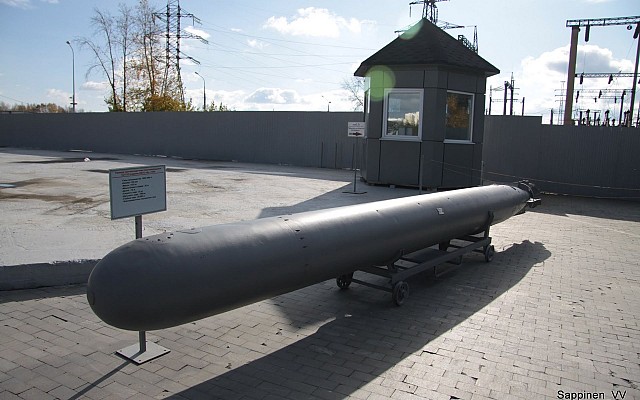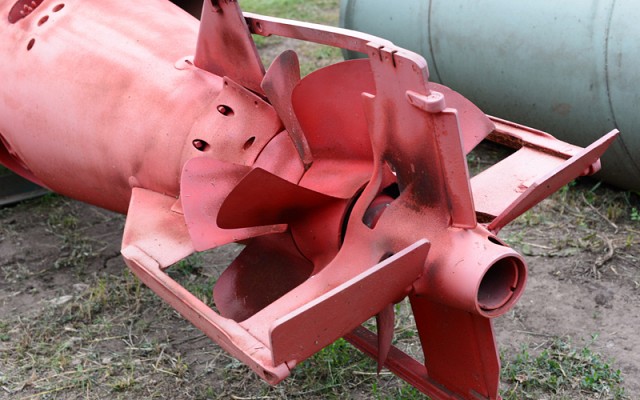SET-53
Yenot-1
Overview
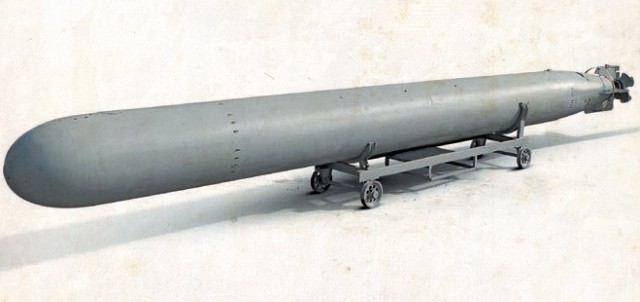
SET-53
SET-53 torpedo on a weapon handling cart.
Source: www.bastion-karpenko.ru -
© Copyright lies with original owner
1964 for SET-53M
Early 1960's for SET-53M
Soviet Union - Gidropribor for SET-53
Soviet Union - SKB Dvigatel for SET-53M
Yenot-1 (project name)
Izdeliye 238 (article index for SET-53)
Izdeliye 238U (article index for SET-53M)
Description
Introduction
The SET-53 is an early Cold War era heavyweight torpedo of Soviet origin. It is launched by both submarines and surface vessels in order to fight enemy submarines. The SET-53 was the first acoustic homing Soviet heavyweight torpedo for use against submarines.
Design
The SET-53 is a 533mm heavyweight torpedo. It is a further development of the SAET-50 design. Whereas the SAET-50 was a passive homing anti-shipping torpedo, the SET-53 is intended for the anti-submarine role. This required an extensive redesign in order to both search and travel underwater instead of at the horizontal level alone. Even with the warhead reduced in size this made the SET-53 longer, setting the standard length of Soviet torpedoes at about 7.8 meters for many decades to come.
Guidance
The SET-53 was the first Soviet passive acoustic homing torpedo for use against submarines. It uses a modified seeker from the SAET-50, which used a seeker that was a near direct copy of the one used on the Nazi German G7es Zaunkönig torpedo. The SET-53 can be used against submarines since the seeker can be used in both horizontal and vertical plane. The seeker starts about 30 to 40 seconds after launch and has a range of up to 600 m. Submarines need to travel at a certain speed to make enough noise for the homing system to be effective.
Firepower
The SET-53 has a 8 km range and a maximum speed of 23 knots. New battery technology significantly improved these parameters on the SET-53M, which a 14 km range in combination with a higher speed of 29 knots. The warhead weighs 100 kg, which may have been 150 kg on the earlier SET-53.
Launch platforms
The SET-53 is used both on submarines and surface vessels. Unlike NATO, where mostly lightweight torpedoes are used on surface vessels, many Soviet of the larger vessels are equipped with heavyweight torpedoes in the ASW role.
Users
The SET-53 and SET-53M were in widespread use in the Soviet navy, both on submarines and surface vessels. These torpedoes were also exported to various nations. The successor is the SET-65, which was introduced in the mid 1960's. Still the SET-53 remained in use for many decades.
Variants
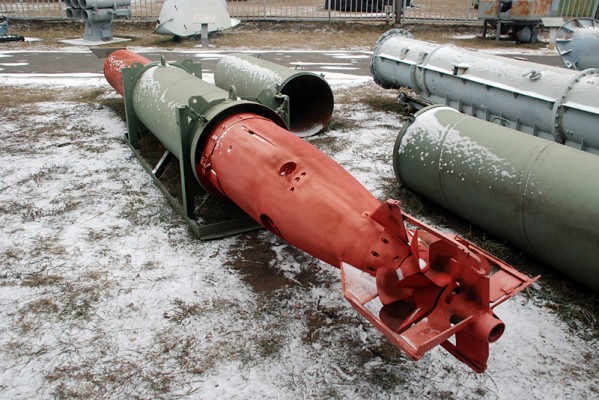
SET-53M
Soviet SET-53M torpedo on display in a museum.
Source: www.bastion-karpenko.ru -
© Copyright lies with original owner
Details
Media
Related articles
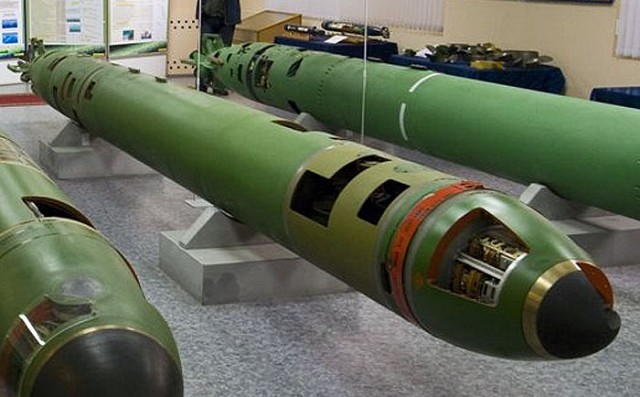
SET-65
The SET-65 is the successor to the SET-53. The SET-65 has a better sensor system and is a much faster torpedo with longer range.
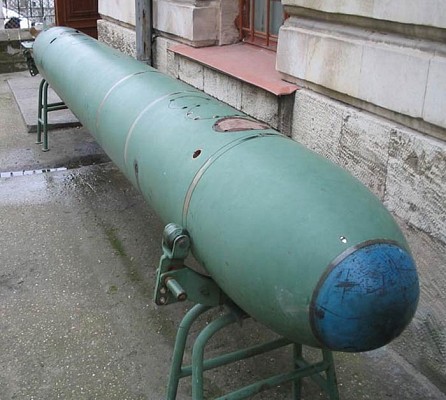
SET-40
The propulsion system designed for the SET-53M was used in modified form in the 400mm SET-40 lightweight torpedo.
